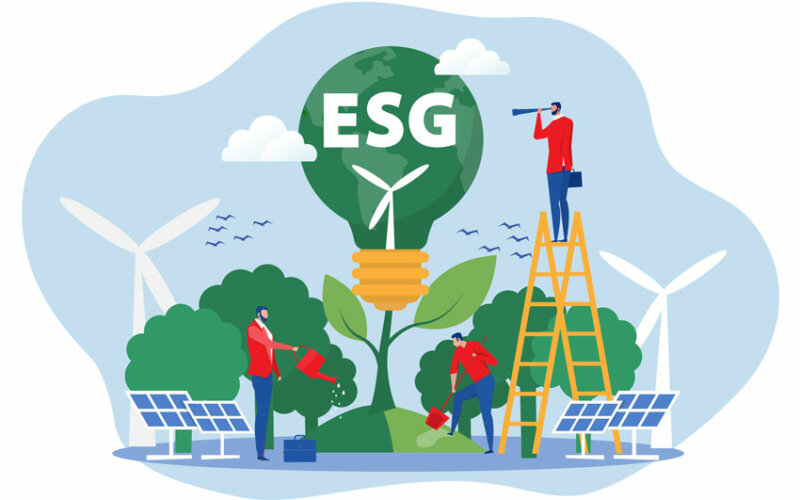On 18 November 2022, the European Securities and Markets Authority (ESMA) issued for consultation draft guidelines on funds’ names using ESG or sustainability-related terms. With these guidelines, ESMA aims to complement the principles-based guidelines on fund names contained in the Supervisory Briefing of 21 May 2022. The objective is to ensure that fund names reflect the investment objectives and strategy of the respective fund as described in the related documentation and marketing communication. This is also intended to curb the increasingly perceived risk of “greenwashing”.
Table of Contents
ESMA will consider all comments received by 20 February 2023 and is expected to publish the final guidelines in the second or third quarter of 2023.
What and who do the guidelines regulate?
The subject of the product-related guidelines are fund designations with ESG or sustainability-related terms. They will apply to fund managers as well as to national competent authorities.
Fund names in documents and marketing communications shall not be misleading. ESG or sustainability-related terminology may only be used if it is substantiated in a material way by sustainability features or objectives.
Essential regulations in relation to funds
Depending on the terminology used, a fund must fulfil the following requirements:
1. Use of the word “sustainable” or a term derived from it
If a fund bears the word “sustainable” or another term derived from it in its name, at least 80% of this fund must be invested in ESG investments within the meaning of the SFDR (promotion of environmental or social characteristics or sustainable investments). Of this proportion, at least 50% must be allocated to sustainable investments within the meaning of the SFDR.
It is not explicitly mentioned whether the thresholds are based on the subscribed capital the contributed/drawn-down capital or the value of the fund. According to the SFDR, the market value must be used for transparency purposes or for the disclosure of the share of environmentally sustainable investments. In this respect, it can only make sense to also refer to the market value for the purposes of the guidelines, especially since the guidelines explicitly refer to the corresponding annexes of the SFDR that are used for disclosure.
In our opinion, the procedure could be different for the share of other, non-environmentally sustainable investments and investments with which environmental or social characteristics are promoted, as there is no corresponding requirement in this respect. The examples given in the guidelines also do not provide any more insight into this.
2. Use of an ESG-related term
Where a fund has an ESG-related term in its name, at least 80% of the investments must be used to meet environmental or social characteristics or sustainable investment objectives in accordance with the binding elements of the investment strategy, as disclosed under the SFDR Delegated Regulation.
3. Minimum safeguards
In addition, ESMA “recommends” that all funds with an ESG or sustainability-related term in their name take or comply with minimum safeguards, including the exclusion criteria applicable to EU Paris-aligned benchmarks (Art. 12 para. 1 and 2 Delegated Regulation (EU) 2020/1818 to the Benchmark Regulation).
Thus, investments in the following areas are not possible if the recommendation is complied with: controversial weapons, tobacco, violations of the principles of the United Nations Global Compact (UNGC) initiative or the Organisation for Economic Co-operation and Development (OECD) Guidelines for Multinational Enterprises, a certain level of electricity generation with a GHG emission intensity of more than 100 g CO2 e/kWh.
Investments regarding the following raw materials are only possible to a limited extent, if the recommendation is complied with: hard coal and lignite, oil fuels, gaseous fuels.
Managers should think carefully about whether they want to set up a fund that does not follow ESMA’s explicit recommendation. On the other hand, it would be conceivable to set up an Art. 8 fund that “only” has to pay attention to “good governance” at the level of the portfolio companies, if necessary, also only for a part of the portfolio companies, which would be much easier to handle than compliance with the minimum safeguards for EU Paris-aligned benchmarks. It is unclear whether the ESMA recommendation calls for compliance with these minimum safeguards across the entire portfolio – in our opinion, this is the case.
4. Index funds
A fund that designates an index as a benchmark may include ESG and sustainability-related terms in its name if the requirements of no. 1) and 2) are met.
We understand this statement to mean that no. 1) is only to be complied with if the word “sustainable” or a word derived from it is also used.
5. Use of the word “impact”, “impact investing” or an impact-related term
Funds that use the words “impact” or “impact investing” or any other impact-related term in their name must comply with the requirements of no. 1) and no. 2) and also make investments with the intention of achieving positive and measurable environmental or social impacts in addition to a financial return.
Expectations of national competent authorities
National competent authorities should consider the requirements of the guidelines throughout the life of a fund. A temporary deviation from the thresholds, if not due to a deliberate decision by the asset manager, should be treated as a passive breach and corrected in the best interest of the unitholders.
Discrepancies in the level of the thresholds which are not passive breaches may be considered by the national competent authority, in light of the relevant circumstances, as a risk indicator justifying further review.
In our opinion, dealing with passive violations does not necessarily mean that the market value of the fund is always relevant for the thresholds. The guidelines also mention that market participants could verify whether the thresholds are being met through the funds’ periodic disclosures. Since, as already explained above, only the market value of environmentally sustainable investments has to be explicitly calculated and the share disclosed accordingly, this does not, in our view, exclude a priori the use of the subscribed or contributed capital for other ESG investments as a basis for the threshold. Passive violations are also conceivable when referring to the subscribed or contributed capital, for example when investments expire or new capital is raised.
Entry into force and transitional period
The guidelines are to enter into force three months after publication of their translation on the ESMA homepage. Affected funds launched prior to this date shall be granted a transitional period of six months – if they include ESG or sustainability-related terms in their name, either their documentation must be brought into line with the requirements of the guidelines within the transitional period or their name must be changed so that it no longer includes ESG or sustainability-related terms.
Comparison with BaFin Consultation 13/2021
As early as August 2021, BaFin published the draft of a guideline with requirements for mutual funds that have a sustainability reference in their name or are marketed as sustainable. If a sustainable fund exists in this sense, the investment conditions must fulfil certain requirements, whereby three different types are available for fulfilling said requirements: 1) sustainable investment fund due to investment in sustainable assets, 2) sustainable investment fund due to a sustainable investment strategy, 3) replication of a sustainable index. BaFin has – unfortunately and legally questionably – declared to apply the guideline in the consultation version despite not having completed the consultation.
Although the requirements of the BaFin guideline only apply to mutual funds, they are in principle stricter than the requirements of the ESMA guidelines. It requires in principle that the environmental objectives and social objectives within the meaning of the SFDR and the environmental objectives within the meaning of the Taxonomy Regulation are not significantly impaired. It also does not differentiate between the use of “sustainable” and “ESG” etc.; all sustainability references trigger the same legal consequences. On the other hand, the BaFin guideline generally sets out a 75 percent threshold.
In RdF (2022, 16), we had already reviewed the draft of the BaFin guideline in detail.
Cover picture: Copyright © Adobe Stock/enjoy25




